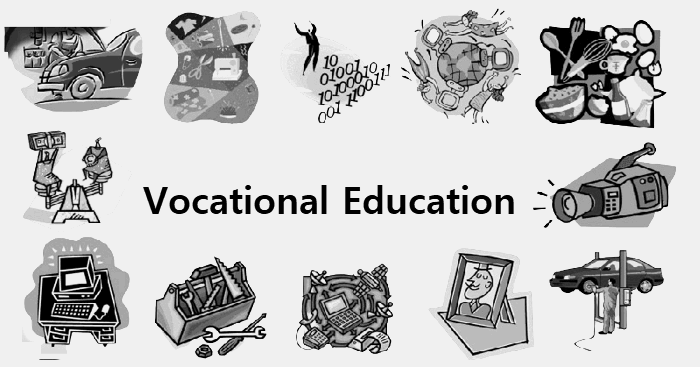
Vocational education has significantly advanced in recent years, with new trends and technologies transforming how we approach training and skill development. From virtual reality and artificial intelligence to gamification and online learning, these innovative tools are helping to shape the future of vocational education. In this article, we'll examine the latest trends and technologies in vocational education and explore the benefits, challenges, and future of this vital field.
Overview of Current Trends in Vocational Education
One of the biggest trends in vocational education today is a focus on skills-based training. This approach emphasizes developing specific, in-demand skills directly applicable to the workforce. This can be seen in the rise of coding boot camps, which teach students the coding skills they need to land a job in the tech industry, as well as in the growing popularity of apprenticeships and other on-the-job training programs.
Another trend in vocational education is the integration of technology into the curriculum. This can take many forms, from online learning platforms that allow students to access course materials and communicate with instructors remotely to virtual reality and other immersive technologies that enhance hands-on training.
Emerging Technologies in Vocational Education
Emerging technologies such as virtual reality, artificial intelligence, and gamification are increasingly important in vocational education. Virtual reality, for example, allows students to experience hands-on training in a simulated environment that closely mirrors real-world scenarios. This can be particularly useful for training in healthcare, construction, and manufacturing, where safety concerns or the high equipment cost can make hands-on training difficult.
Conversely, artificial intelligence can personalize and improve the effectiveness of vocational training. For example, an AI-powered learning management system can track student progress and adjust the curriculum to better suit their needs. Gamification, meanwhile, can make vocational training more engaging and interactive, making it more appealing to students and increasing their motivation to learn.
Benefits of Vocational Education
Vocational education can offer many benefits to students, including the ability to quickly enter the workforce and the potential for career advancement. Vocational training programs are often shorter and more focused than traditional four-year college programs, making them an excellent option for those who want to start working as soon as possible. Because vocational education directly applies to specific jobs, students who complete these programs are often well-prepared for the workforce and are in high demand by employers.
Challenges Facing Vocational Education
Despite its many benefits, vocational education also faces several challenges. Funding is one of the biggest challenges, as vocational education programs often require expensive equipment and facilities. Additionally, vocational education programs must keep pace with rapidly changing industries, which can be challenging given the limited resources available to many vocational schools.
Case Studies and Examples
Many examples of successful vocational training programs have incorporated new technologies and trends. One example is the virtual reality welding program at the College of Western Idaho, which allows students to experience hands-on welding training in a safe, simulated environment. Another example is the apprenticeship program at Siemens, which combines traditional on-the-job training with virtual reality simulations to provide students with the skills they need to succeed in the manufacturing industry.
The Future of Vocational Education
The future of vocational education is likely to be shaped by several developments and innovations, such as the increasing use of artificial intelligence and machine learning in vocational training. In addition, the growing popularity of micro-credentials and online learning platforms will likely change how we use online and distance learning, the growth of Industry 4.0, and the increasing importance of soft skills such as problem-solving, critical thinking, and teamwork. Additionally, there will be a growing focus on sustainable practices, green technologies, and the integration of AI and data analytics in vocational education.
Vocational education is a crucial field constantly evolving to meet the workforce's needs. With the rise of new technologies and trends, vocational education is becoming more personalized, interactive, and effective than ever before. By staying informed about the latest developments and innovations in vocational education, educators, students, and industry professionals can ensure that they are well-prepared for the future of work.
Another important aspect of vocational education is emphasizing soft and employability skills. With the rise of automation and artificial intelligence, the ability to work well with others, communicate effectively, and think critically is becoming increasingly valuable in the workforce. Many vocational education programs are now incorporating soft skills training into their curriculums to better prepare students for the demands of the modern workforce.
Another trend expected to shape the future of vocational education is the increasing use of online and distance learning. With technological advancements, online learning platforms are becoming more sophisticated and interactive, making it possible to deliver vocational education to students in remote or underserved areas. This can be a game-changer for many students who otherwise would not have access to vocational training. Furthermore, online learning also makes it possible for students to learn at their own pace and in their own time, which can be especially beneficial for working adults looking to upskill or reskill.
The rise of Industry 4.0 and the increasing importance of sustainable practices and green technologies are also expected to impact the future of vocational education significantly. As industries continue to digitize and automate, vocational education programs must adapt to provide students with the skills they need to succeed in the new digital economy. Additionally, as the world becomes increasingly conscious of the need to protect the environment, vocational education programs must incorporate training on sustainable practices and green technologies to ensure students are prepared for future jobs.
In addition to all the above points, vocational education has a tremendous economic impact. Programs provide students with the skills they need to succeed in the workforce and contribute to a region's overall economic development. According to the National Center for Education Statistics, vocational education programs can boost productivity, increase the number of skilled workers, and raise all citizens' living standards.
Conclusion
In conclusion, vocational education is an ever-evolving field that prepares students for the workforce. With new trends and technologies constantly emerging, educators, students, and industry professionals must stay informed about the latest developments in vocational education. By embracing new technologies and trends and incorporating soft and employability skills into their curriculum, vocational education programs can better prepare students for future jobs. Furthermore, by understanding the economic impact of vocational education, society can invest in it as a key driver of economic development.
Also Read:
- Apprenticeships: How to Get Started
- Careers in Trades: Opportunities and Salaries
- Choosing a Vocational Career: What to Consider
- Importance of Vocational Education in Today's Job Market
- Online Vocational Programs: Advantages and Disadvantages
- Preparing for a Vocational Career: Tips and Strategies
- Role of Government in Supporting Vocational Education
- The Advantages of Vocational Education for High School Students
- The Future of Vocational Education: Emerging Trends and Technologies
- The Role of Vocational Education in Economic Development
- The Vocational Education and Training System
- Types of Vocational Programs: Which One is Right for You?
- Vocational Education and Entrepreneurship
- Vocational Education and Industry 4.0
- Vocational Education and Job Placement
- Vocational Education and Lifelong Learning
- Vocational Education and Skills Shortage: How to bridge the gap
- Vocational Education and the Future of Work
- Vocational Education and the Gig Economy
- Vocational Training vs. College: What's the Difference?






